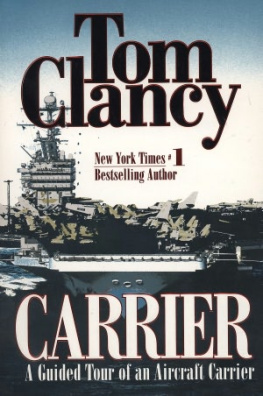
ADMIRAL
ARLEIGH (31-Knot) BURKE

Naval Institute Press
291 Wood Road
Annapolis, MD 21402
All rights reserved. No part of this book may be reproduced or utilized in any form or by any means, electronic or mechanical, including photocopying and recording, or by any information storage and retrieval system, without permission in writing from the publisher.
First Bluejacket Books printing, 2001
ISBN: 978-1-61251-552-6 (eBook)
Library of Congress Cataloging-in-Publication Data
Jones, Ken, 1903 Feb. 11
Admiral Arleigh (31-knot) Burke : the story of a fighting sailor / Ken Jones and Hubert Kelley, Jr.
p. cm.
Originally published: Philadelphia : Chilton Books, 1962.
Includes bibliographical references and index.
1. Burke, Arleigh A., 1901 2. AdmiralsUnited StatesBiography. 3. United States. NavyBiography. 4. United StatesHistory, Naval20th century. 5. World War, 19391945Naval operations, American. I. Kelley, Hubert. II. Title.
E746.B87J66 2001
359'.0092dc21
17 16 15 14 13 6 5 4 3 2
DEDICATION
The record of Arleigh Burkes life is, in its most important dimensions, a study in courage, integrity, and the purposeful conservation and development of those fundamental disciplines which, in all ages, have been characteristic of individual greatness and which inevitably fortify the thrust of human progress without which we perish.
The authors dedicate this recordthis studyto the memory of
EMILY BRETTMAN SORG
As Arleigh Burke, in his career, enriched the traditions of the United States Navy and kept the faith, so also did Emily Brettman Sorg keep the faith and enrich a different but perhaps no less important tapestry. Despite a desperate personal sorrow, she faced life with courageous serenity and passed on to her children and her childrens children a heritage of spiritual honesty, human dignity, individual responsibility, and love.
Scripta manent

This book reflects clearly the integrity of Arleigh Burke and, at the same time, his understanding and willingness to work in harness with the combination military-and-civilian structure of the Department of Defense and the Joint Chiefs of Staff in our countrys military effort.
An excellent example of the strength of Admiral Burke as an associate was revealed in the way in which he supported the reorganization of the Department of Defense in 1958 when his conscience let him do so, but opposed those parts of reorganization which he felt were contrary to the defense interests of the country. When differences existed between the Secretary of Defense and Arleigh Burke, one had to respect the way in which he put forward his views. He did not carry out his opposition covertly, but always in a forthright and open manner.
The head of an organization such as the Department of Defense needs to have articulate dissent from his immediate subordinates in order to avoid arriving at conclusions based on lack of full understanding of the pros and cons. What is important to the Secretary of Defense is that any opposition to Administration proposals be expressed openly so that the differences may be resolved after full consideration of all points of view.
Arleigh Burke was at his best in presenting his own viewpoint on defense-wide problems, pressing them until the decision was made but then accepting and operating loyally under the decision as made.
Tom Gates, who was Secretary of the Navy when I took office and who later became Deputy Secretary of Defense and then Secretary of Defense, was a civilian counterpart of Arleigh. Both of these men were straight as a die in the conduct of their individual responsibilities. They were vigorous and lucid in setting forth their views, but these views were always out in the open for full discussion and consideration. Both men were all Navy, but they had sufficient breadth to understand that at times they must accept a decision by the Secretary of Defense which might not be in full accord with the views of the Navy. These were valued associates and good friends.
I have found my reading of this book to be of interest to me not so much because of any new insight into the character of Arleigh Burke as that the relating of many incidents of Arleighs life with which I was unfamiliar has provided additional testimony to the character of the man as I have known him.
NEIL MCELROY
Secretary of Defense, 19571959
Contents

ADMIRAL
ARLEIGH (31-Knot) BURKE
Good morning, sir!
Chief Machinists Mate David L. (Ham) Hamilton, USN, stood loosely erect holding open a rear door of the vintage Chrysler sedan assigned for the personal use of four-star Admiral Arleigh Burke, USN, Chief of Naval Operations. The vehicles principal claim to modernity was a two-way radio telephone which afforded the Admiral instant communication the world around through Flag Plot, the Navys nerve center in the Pentagon. Burke had several times been offered a current model limousine but had steadfastly refused to give up the old Chrysler which, he felt, served him adequately.
Good morning, Ham.
The professional boss of the U.S. Navy, wearing a conservatively cut grey suit accented by a somewhat boisterous cravat which he sometimes favored, slipped agilely into the back seat. He rested across his knees the polished red-brown leather attach case containing the papers he had worked on overnight and which he would continue to peruse and ponder on during the brief drive to his Pentagon office. Thirty-nine years of naval service and training had made Burke meticulous in all things, and the documents in the case were carefully compartmented in separate folders.
Instinctively neat and precise, although not preciously so, Arleigh Burke was a well set up, broad-shouldered six-footer of some fifty-seven years. He walked with a long-rolling and reaching stride, and his carriage was notably erect. The rectangular appearance of his face was accentuated by a short, thick neck which seemed to carry the perpendicular planes of his cheeks and the thwartwise lines of a heavy chin and jaw right down into the V of his collar. He had a wide, full mouth which smiled easily, revealing strong, white teeth. During most of his waking hours, these were clamped tight upon the bit of a straight briar pipe, of which he kept a number constantly at hand. His nose was broad and his ears, set well out from his head, might have given an old salt the fanciful impression of a Chesapeake Bay schooner sailing wing-and-wing before a spanking breeze. The Admirals hair was curly, somewhat sparse, and grey-white. His unusually high forehead rose almost majestically above attention-arresting blue eyes which looked straight and level from beneath lids permanently squinted a little in the characteristic stigmata of the officer accustomed to long sailing of sunny seas. Considering his age, Burkes face showed very few of the deep-etched lines which the years invariably bring to those charged with decision. His only jewelry was a gold watch, worn on his left wrist, and his Naval Academy class ring, worn on the third finger of his left hand.
The time was 0715 on the still fresh summer morning of Monday, July 14, 1958. The immediate locus was Admirals House, a charming mansion set amid the landscaped lawns and terraces of the Naval Observatory at the head of Massachusetts Avenues famed Embassy Row, and traditionally assigned as quarters for the incumbent Chief of Naval Operations. And the problemnever was there a moment without its own special problemthe problem this morning was the Middle East.
Next page











